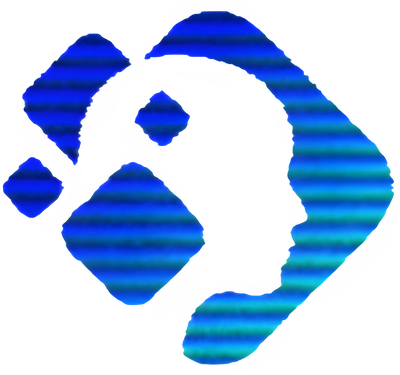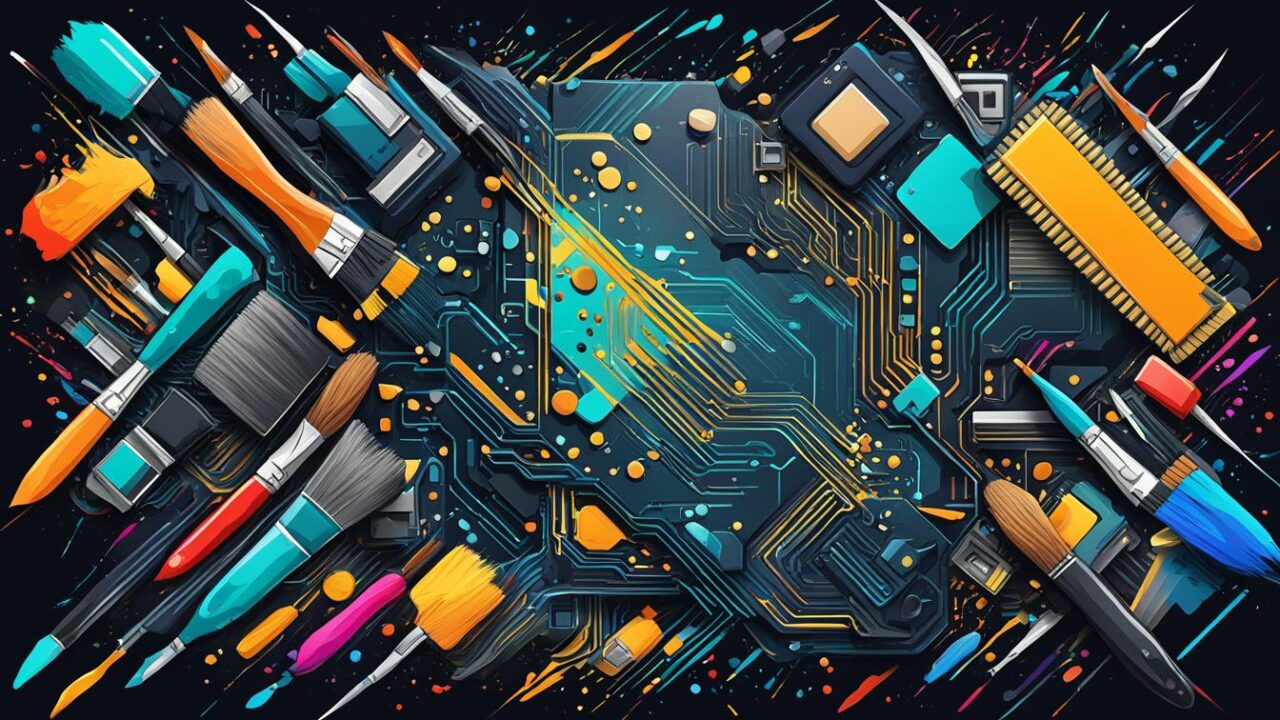I decided to write this article after receiving an interesting comment on my Instagram post, where I shared my YouTube video. The comment went like this: ‘It’s kind of ironic to use AI, which is currently affecting artists in various fields (like illustrators and photographers), to promote your ‘workpressurehelp’ site or whatever you call it. But I do appreciate your overall message.’ This comment got me thinking, and it’s what led me to create the article you’re about to dive into.
AI, or artificial intelligence, is revolutionizing the world of art and transforming artistic professions in unprecedented ways. In this article, I will explore the intersection of AI and art, investigating how technology is reshaping various artistic disciplines and sparking a new era of creative possibilities. From enhancing artistic expression and efficiency to raising questions about the authenticity of art, AI’s impact on artistic professions is both promising and controversial. Join me as we delve into the double-edged brush of AI in the art world.
Key Takeaways:
- AI is reshaping artistic professions through its impact on various artistic disciplines.
- AI enhances artistic expression and improves the efficiency of creative processes.
- There is a controversy surrounding AI-generated art and its impact on the authenticity of artistic creations.
- Traditional artists are navigating their role in the AI era and exploring collaborations with AI technologies.
- AI is fostering creativity and pushing the boundaries of artistic expression through machine learning algorithms.
The Emergence of AI in the Realm of Artistic Professions
The fusion of technology and creativity has given rise to the emergence of AI in artistic professions. In this section, we will explore the intersection of technology and creativity, tracing the evolution of artistic tools, and examining real-life case studies that showcase the applications of AI in contemporary art.
Understanding the Intersection of Technology and Creativity
The intersection of technology and creativity has opened up a world of possibilities for artists. AI, with its machine learning algorithms and advanced programming, is revolutionizing artistic processes. By leveraging algorithms, artists can discover new artistic styles, analyze visual data, and push the boundaries of their craft. The integration of technology and creativity has given rise to a new era of technology-driven art projects.
The Evolution of Artistic Tools: From Paintbrush to Programming
Artistic tools have evolved significantly with the emergence of AI. From traditional paintbrushes to digital pens and tablets, artists now have access to a wide range of tools that blend traditional techniques with cutting-edge technology. AI-powered software and hardware have transformed the creative process, enhancing artistic efficiency and expression. Artists can explore innovative techniques and experiment with new mediums, thanks to the evolution of tools in art.
Case Studies: AI Applications in Contemporary Art
To gain a deeper understanding of AI’s impact on the art world, it is essential to examine real-life case studies. These case studies highlight the practical applications of AI in contemporary art and the ways in which technology is reshaping artistic professions. From generative adversarial networks (GANs) creating unique artworks to interactive installations powered by AI algorithms, artists and technologists are collaborating to push the boundaries of creative expression. These case studies showcase the diverse ways in which AI is revolutionizing the art world.
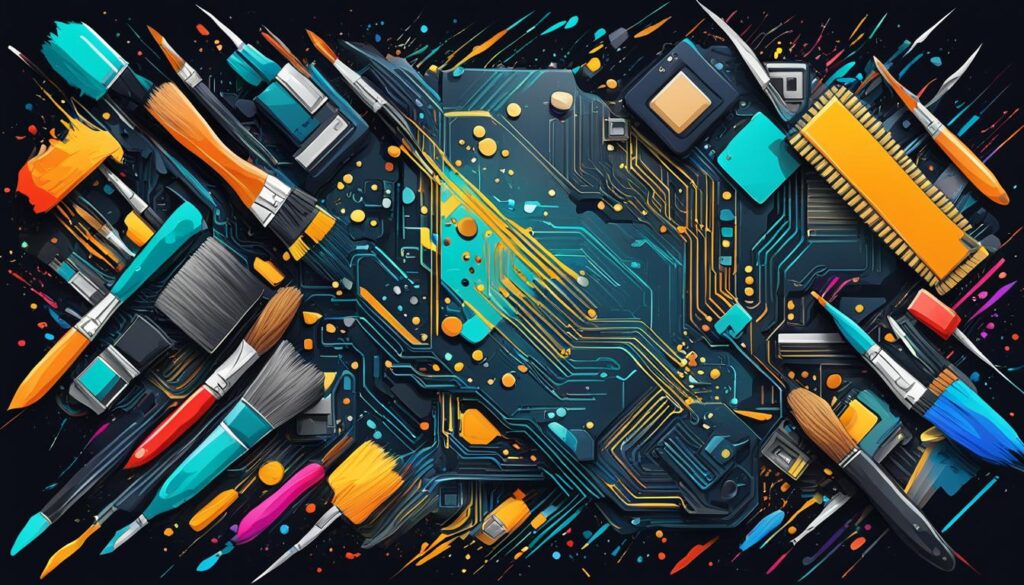
In the next section, we will explore the double-edged impact of AI on artistic professions, examining how AI enhances artistic expression and raises questions about the authenticity of art.
The Double-Edged Brush: How AI is Reshaping Artistic Professions
AI’s impact on artistic professions is a double-edged sword, transforming the way artists create and posing challenges to the authenticity of art. In this section, we’ll explore how AI enhances artistic expression and revolutionizes the art-making process. We’ll also delve into the controversy surrounding AI-generated art and the concerns regarding the diminishing role of traditional artists in the age of AI. By examining both the advantages and drawbacks of AI in the art world, we can gain a comprehensive understanding of its impact.
AI Enhancing Artistic Expression and Efficiency
AI is revolutionizing artistic expression and improving the efficiency of creative processes. By leveraging technology, artists can explore new artistic styles and experiment with techniques that were once out of reach. From AI-powered digital assistants that assist in generating ideas to algorithms that analyze large datasets to inspire unique compositions, AI has become an indispensable tool for artists. This section will showcase how AI is enhancing artistic expression and empowering artists to push the boundaries of their creativity.
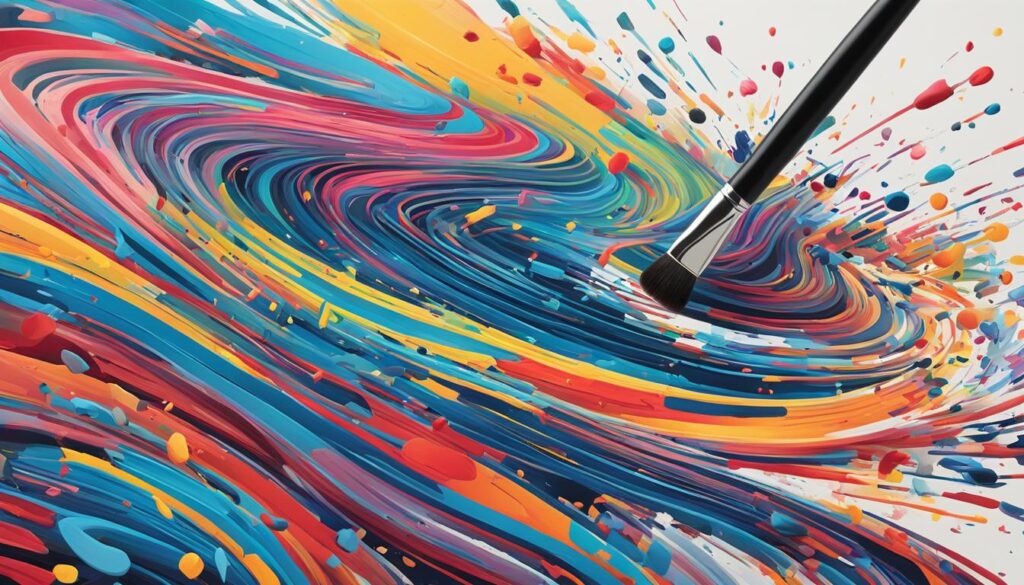
The Controversy: AI and the Authenticity of Art
The rise of AI-generated art has sparked a controversy surrounding the authenticity of artistic creations. Critics argue that AI-made art lacks the emotional depth and intentionality found in human-made art, while others view AI as a new form of artistic collaboration. This section will delve into the debate, examining the philosophical and ethical implications of AI in art. We’ll analyze the role of creativity, intentionality, and human connection in the artistic process and explore the implications of AI-generated art on the concept of artistic authenticity.
Empowerment vs. Obsolescence: The Fate of Traditional Artists
With the advent of AI in artistic professions, concerns have arisen regarding the future of traditional artists. This section will examine the potential fate of traditional artists in the AI era, exploring whether AI will empower or render them obsolete. We’ll discuss the possibilities of collaboration between traditional artists and AI technologies, highlighting how human creativity can be augmented by AI. By examining the evolving dynamics between artists and technology, we can better understand the transformative impact of AI on artistic professions.
Exploring the Impact of AI on Various Artistic Disciplines
AI’s impact on artistic professions extends beyond the realm of visual arts. In addition to painting, AI is reshaping various artistic disciplines, including music, sculpture, and photography. Let’s delve into how AI is transforming each of these disciplines and the unique contributions it brings to the world of art.
Painting
When it comes to painting, AI-generated algorithms are revolutionizing the way artists create. These algorithms have the ability to produce original paintings based on various inputs, such as style, color, and subject matter. By analyzing vast amounts of data, AI can generate unique and innovative artwork, pushing the boundaries of traditional artistic techniques.
Music Composition
Music composition is another area where AI is making a significant impact. With the help of AI algorithms, composers can explore new musical styles, experiment with harmonies and melodies, and even create entire compositions. AI music composition tools provide musicians with endless possibilities for creativity and inspiration.
Sculpture
AI’s influence on sculpture is also noteworthy. Through advanced 3D modeling and fabrication techniques, AI can assist artists in sculpting intricate forms and structures. This technology enables sculptors to bring their visions to life with greater precision and efficiency. AI-driven tools are transforming the way sculptures are conceptualized, designed, and realized.
Photography
Photography, too, has experienced a transformation with the integration of AI. AI algorithms can assist photographers in various ways, such as enhancing image quality, automating post-processing tasks, and even generating unique visual effects. AI-powered cameras and software have expanded the possibilities for photographers, enabling them to capture stunning images and experiment with new artistic approaches.
By exploring the impact of AI on these various artistic disciplines, we gain insights into the future of art in a technologically driven world. AI is not only reshaping the art world as we know it, but it is also opening up new horizons and possibilities for artists to explore and express their creativity.
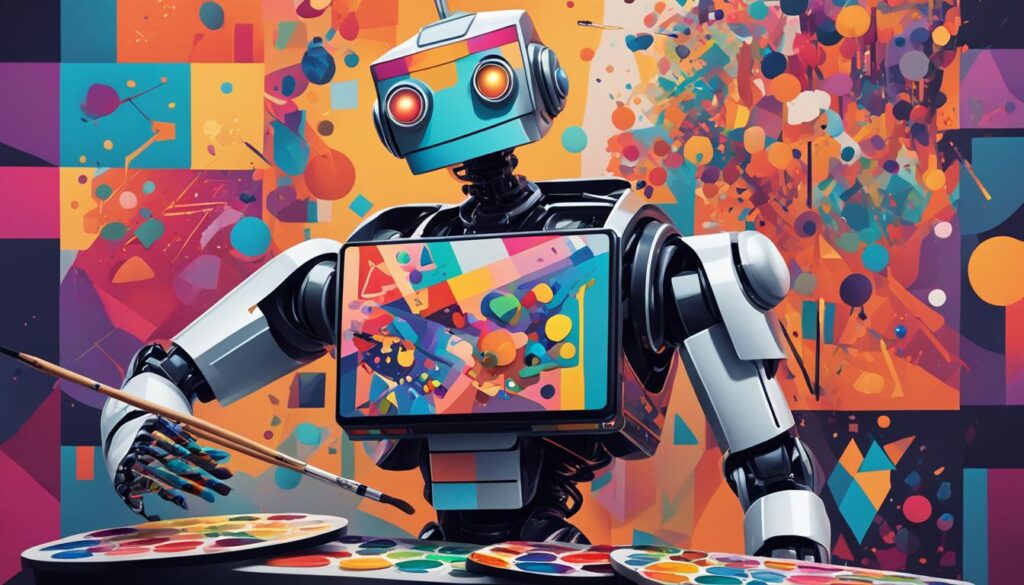
Art and Technology Collaboration: A New Era of Creative Possibilities
The collaboration between art and technology has unlocked a realm of creative possibilities that were previously unexplored. By combining the power of technology with artistic vision, artists are pushing the boundaries of creativity and reimagining the artistic process. Through the integration of machine learning algorithms and AI tools, art is evolving in ways that were unimaginable just a few years ago.
Fostering Creativity Through Machine Learning Algorithms
Machine learning algorithms have emerged as a catalyst for creativity, offering artists new sources of inspiration and innovative approaches to problem-solving. Artists harness AI algorithms for innovative ideas, analyze data, and employ computation to enhance creative decision-making, sparking unique artistic paths. Leveraging AI, artists can venture into uncharted domains, defy conventional norms, and reshape the limits of their creativity.
Interactive Art: Engaging Audiences with AI
The integration of AI in interactive art has revolutionized audience engagement and transformed the relationship between art and its viewers. By harnessing AI-driven installations, artists can craft immersive creations, which react to audience input, thus erasing the boundary between observer and artwork. Interactive AI-driven art, from adaptable installations to AI-generated virtual reality, mesmerizes audiences, offering unprecedented engagement and immersion.
Integrating AI into Art Education and Industry Practices
The impact of AI extends beyond the creative process and has found its way into art education and industry practices. In art education, AI is being utilized as a powerful tool to teach and inspire the next generation of artists. Utilizing AI-driven educational platforms and interactive learning, students explore AI’s creative potential and its impact on art’s future. Additionally, AI is transforming various industry practices within the art world, from curation and marketing to audience engagement. By utilizing AI-driven techniques, art institutions and professionals are finding new ways to curate and exhibit art, reach diverse audiences, and enhance the overall art experience.
Art and technology collaboration is ushering in a new era of creative possibilities. By harnessing the power of machine learning algorithms, artists are fostering innovation and expanding the boundaries of artistic expression. Through interactive art experiences, audiences are engaging with art on a deeper level, immersing themselves in AI-driven installations that captivate and inspire. AI’s integration in art education and industry reshapes art, empowering artists, altering creation, exhibition, and appreciation processes.
Conclusion
In conclusion, the impact of AI on art is both transformative and complex. It has revolutionized the way artists express themselves, allowing for new levels of creativity and efficiency. AI-driven tools and algorithms enhance artistic processes, inspiring artists and opening new creative frontiers. The collaboration between art and AI has opened up exciting possibilities and has the potential to shape the future of the art world.
However, the rise of AI-generated art also raises important questions about the authenticity and role of traditional artists. The debate surrounding the emotional depth and intentionality of AI-made art challenges the notion of what it means to create art. In navigating art’s tech evolution, use AI thoughtfully to empower artists, preserving their unique contributions, not replacing them.
It is also crucial to underscore the conflict between AI-driven innovation and artistic integrity. For a more in-depth understanding of the legal challenges and concerns faced by artists in the age of AI, particularly in the context of the lawsuit involving Kelly McKernan and other artists against AI tool creators, you can refer to the detailed report on Cryptopolitan. This report provides comprehensive insights into the matter. Here is the link to the article for further reading: Cryptopolitan Article.
Looking ahead, the future of art in the AI era holds immense potential. Embrace the AI-powered creative era to expand artistic boundaries and harness its potential for innovative expression. Through a symbiotic art-tech bond, artists and AI can unite human creativity with machine intelligence, forging innovative art. In this thrilling era, we should welcome AI’s dual impact on art, fostering innovation while preserving authenticity.
FAQ
How is AI reshaping artistic professions?
AI is revolutionizing artistic professions by enhancing artistic expression and efficiency, transforming the creative process, and raising questions about the authenticity of art.
How is technology intersecting with creativity in art?
The fusion of technology and creativity has opened up new possibilities in the art world. AI is leveraging machine learning algorithms and advanced programming to enhance artistic processes and support technology-driven art.
How are traditional artistic tools evolving with the emergence of AI?
Traditional artistic tools, such as paintbrushes, are being complemented by AI-powered software and hardware. Artists now have access to a wide range of tools that blend traditional techniques with cutting-edge technology.
Can you provide examples of AI applications in contemporary art?
AI has been utilized in various ways in contemporary art. Examples include generative adversarial networks (GANs) creating unique artworks and interactive installations powered by AI algorithms.
How is AI enhancing artistic expression and efficiency?
AI is empowering artists by assisting in generating ideas, analyzing visual data, and offering new artistic styles. It improves the efficiency of creative processes and allows artists to explore techniques that were once out of reach.
What is the controversy surrounding AI-generated art?
Critics argue that AI-made art lacks emotional depth and intentionality found in human-made art. However, others view AI as a new form of artistic collaboration, blurring the lines between the artist and the technology.
What is the fate of traditional artists in the AI era?
The future of traditional artists in the AI era is a topic of debate. Some believe that AI will enhance traditional artists’ creativity, while others worry that it may render them obsolete.
How is AI reshaping various artistic disciplines?
AI is impacting multiple artistic disciplines, including painting, music, sculpture, and photography. AI-generated algorithms can create original artworks, compose music, and sculpt intricate forms.
How is AI fostering creativity through machine learning algorithms?
AI algorithms can inspire artists with new ideas and assist in the creative decision-making process. By harnessing the power of AI, artists can explore uncharted territories and push the boundaries of their creativity.
How is AI being used in interactive art?
AI is transforming interactive art by creating artworks that respond to audience input and create immersive experiences. From installations that adapt to the viewer’s presence to virtual reality experiences, AI enhances the relationship between art and its viewers.
How is AI integrated into art education and industry practices?
AI is being used in art education to teach and inspire the next generation of artists. It is also transforming industry practices such as curation, marketing, and audience engagement, contributing to the future of art in an increasingly technologically advanced world.
